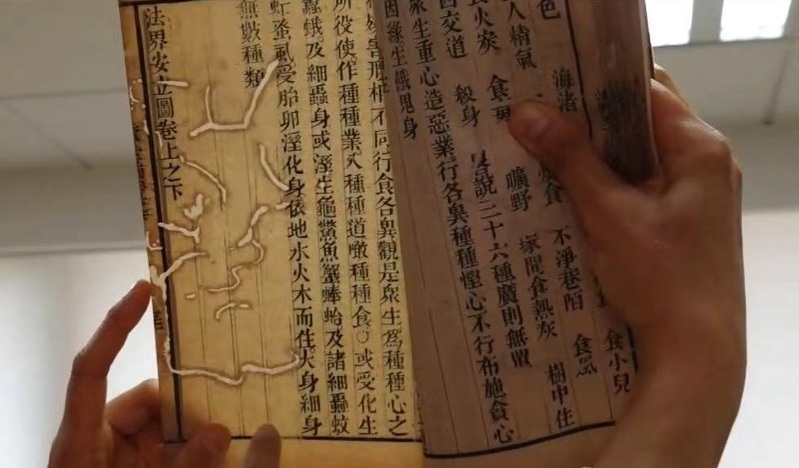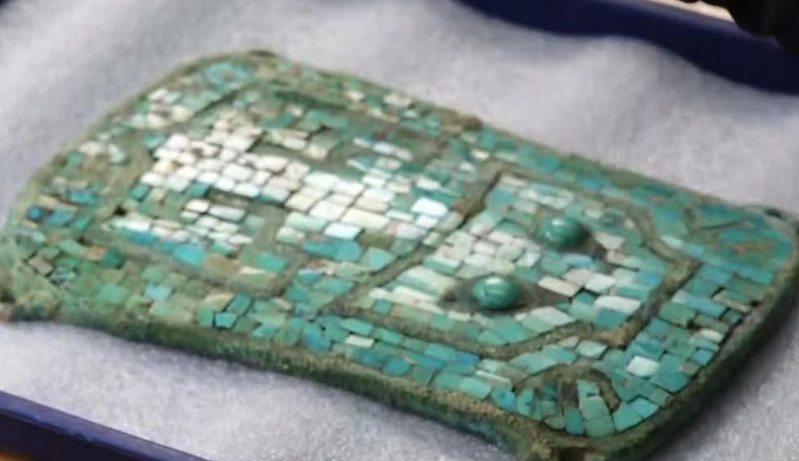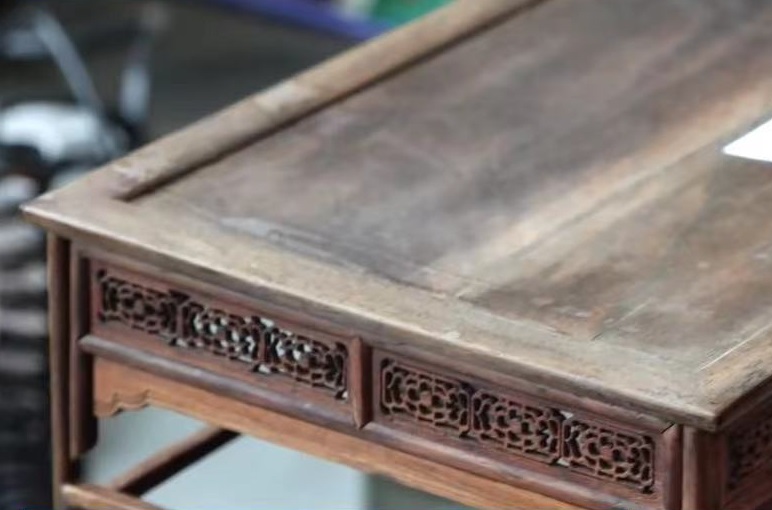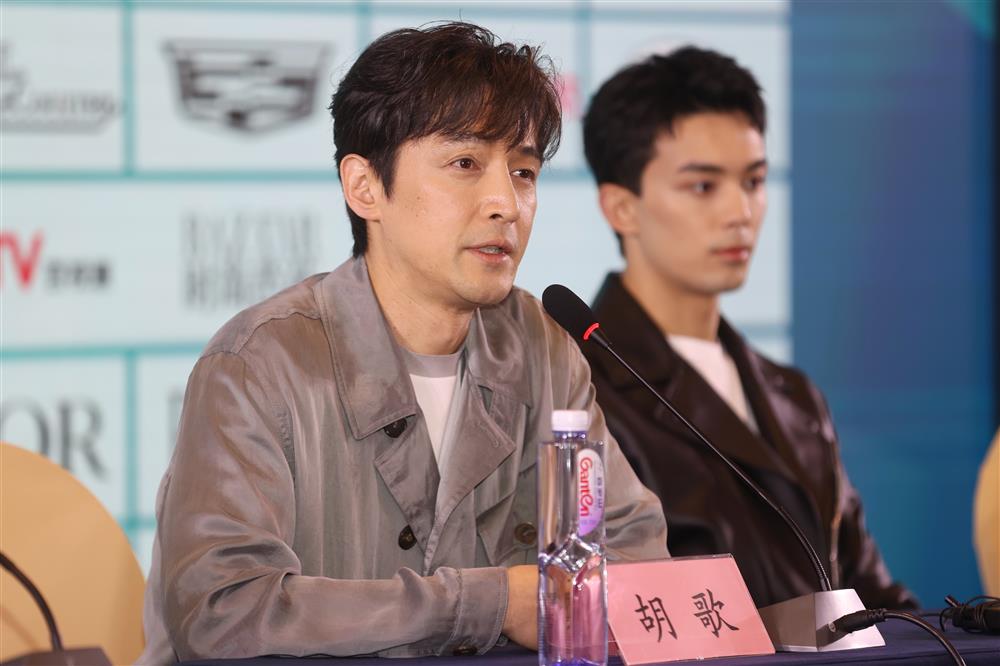I also make my own handmade tools: The museum used to use artificial intelligence skills to restore cultural relics in this way. | Project | Museum
Hammers, hammers, sandpaper... What kind of work would this series of tools on the workbench bring to mind? At the "Jade Chu Flowing Fragrance: Exhibition of Song and Yuan Dynasty Ancient Books in the Collection of Shanghai Museum" held on the 2nd floor of the Shanghai Museum, the pages of the books are slightly yellowish but completely smooth; The handwriting is occasionally missing but clear and beautiful.
Little did they know that these precious ancient books were meticulously repaired by professional restoration workers using tools that make it difficult to connect with books and cultural relics, restoring their vitality and vitality. It is reported that multiple cultural relic restoration techniques have been included in intangible cultural heritage projects in the Shanghai Expo, and several cultural relic restoration workers have become inheritors of intangible cultural heritage.
On World Museum Day recently, the Shanghai Museum led the audience into the mysterious Shangbo Cultural Relics Protection Technology Center through a live broadcast to glimpse the secrets of cultural relic restoration.
The Secret on the Back of Ancient Books
Chen Ning, the inheritor of the intangible cultural heritage of the Shangbo Ancient Book Restoration Technique Project, picked up a sample of ancient book restoration. The page under the light was flat and the color was uniform, without any repair marks, and even touch and touch could not feel any change in thickness. However, when the light was lifted, multiple twisted and winding patterns could be seen. The middle color was light, indicating the original crack missing, while the edge color was dark, indicating the overlapping part after repair.
"The insect infestation in the Jiangnan region is severe, and many ancient books have traces of erosion that need to be repaired." Chen Ning showed several types of ancient books that need to be repaired, some of which were damp and then dried in the sun, the paper was brittle and hard, and some were simply missing a small half page. However, at the exhibition held in the upstairs exhibition hall, there was no sign of the pages being damaged. The opened paper was soft and smooth, and although some of the pages had missing handwriting, they still looked like intact pages.
The restored ancient books show visible traces of light transmission

To restore ancient books, the first step is to choose paper that is very close. The first thing that comes with every ancient book that needs to be repaired is to analyze the paper. "We will test the pH value of the paper to determine the degree of oxidation, and also use an instrument to measure the thickness of the paper. Chen Ning has a filing cabinet containing various types of paper collected to match the needs of ancient books. When there is a color mismatch, manual dyeing is also necessary to achieve uniformity: 'Not only do the paper need to be dyed, but the silk thread color of the binding also needs to be consistent.'"
The various tools on the workbench are difficult to connect with the delicate work of ancient book restoration, but they have been repeatedly practiced by restoration workers. For example, a row of wooden sticks with varying thicknesses were cut by Chen Ning and his colleagues themselves. Many ancient books are stuck together when encountering water, requiring such tools to cut through small openings and separate them step by step to ensure completeness.
The tool that appears to be a hammer is actually flat on both sides, and its function is still to "strike". "Paper is made of fibers, so we need to grasp the strength and hammer bit by bit to penetrate the fibers of the supplementary paper into the book page, allowing the fibers to blend together. Only in this way can it be a piece of paper in terms of thickness and texture."
Simulate the traces of time
New books usually have sharp and straight edges cut with a paper cutter, and cultural relics restoration will use sandpaper to manually polish and repair the edges of the pages. "The edges of ancient books have a fuzzy touch. Cultural relics need to be repaired as old, sandpaper polishing will be gentler and softer, imitating the ancient style, and putting it in books will not be abrupt." Chen Ning said that cultural relic restoration tests not only skills, but also aesthetics. "We need to choose the most suitable materials and integrate them with the cultural relics themselves."
On her table, there are also different types of flour - which are also common materials for restoring ancient books. Cultural relics restoration workers need to prepare their own paste according to the paper characteristics and historical records of ancient books. Generally, the inside pages are made of wheat starch, and the front covers are made of glutinous rice flour.
Maintaining ancient methods is a necessary means of restoring cultural relics. In the ancient furniture restoration area, a spacious wooden chair that has just been repaired is surrounded by a blue frame, with finely carved faucets on both sides of the armrests and backrest. Ma Rugao, a representative inheritor of the municipal intangible cultural heritage of the Shangbo Ancient Furniture Restoration Art Project, introduced that this Qing Dynasty ginkgo wood chair was once the throne of the Heavenly King Hong Xiuquan of the Taiping Heavenly Kingdom.

When the throne was delivered, it was already like this
He took out the CT scan taken when the chair was first delivered, which showed many defects in the legs, backrest, and other parts. There were only one delicate faucet left on the left side of the back. Based on the remaining dragon head, the restoration worker replicated three using the original carving technique and reinstalled them. Taking another chair under repair as an example, he determined that the raw material was small leaf rosewood. The repairman first repaired the scattered fragments that could be found one by one, and then used the same material to make up for the missing parts. And another Qing Dynasty rosewood painted palace lamp base that is under repair is being cleaned by staff. Next to it is placed the same gold powder as in ancient times, and the original gold painted part is being redrawn.
Artificial intelligence calculates the details of cultural relics
In the bronze ware restoration area, restoration workers are assembling multiple small white ceramic blocks into a larger one, with fine patterns carved on it - they are using the gypsum flip mold method, which is similar to the pottery model used in the Shang Dynasty to cast bronze ware, and for this purpose, they have specifically referred to the actual tools left by the Han Dynasty.
"To maintain traditional advantages, we also need to absorb new technologies." Zhang Peichen, a representative inheritor of the municipal intangible cultural heritage of the Shangbo Bronze Ware Restoration and Reproduction Project, introduced a mid Shang Dynasty bronze wine vessel that will be exhibited at the Shangbo East Hall in the future. Although it has basically taken shape, there are still many small pieces missing, and more than 20 fragments scattered on the table. "At that time, we had just entered the Bronze Age, and there were not many such cultural relics left in the world." Zhang Peichen introduced that compared to the original method of assembling fragments by comparing patterns and shapes through personnel, now we will first scan the cultural relics in 3D, calculate the orientation of the fragments, and then use 3D printing technology to fill in the gaps.
Partial missing turquoise can be calculated using AI
Artificial intelligence is also involved in the restoration of cultural relics. Last year, at the "Homestead in China - Henan Xia Shang Zhou Dynasty Civilization Exhibition" on the Shanghai Expo, the inlaid turquoise animal face pattern plaques unearthed from the Erlitou site left a deep impression on many people. There are only a dozen cultural relics of the same type left worldwide. At the Shangbo Cultural Relics Protection Technology Center, a turquoise plaque is about to be restored. In order to restore this precious cultural relic, the center inputs data from all similar cultural relics around the world into a computer, and uses artificial intelligence to calculate the order of turquoise arrangement. It lists the size and shape of turquoise required for each position that needs to be patched, and then searches for suitable materials to fill the gaps. Zhang Peichen said, "We are using contemporary technology to pursue the craftsmanship of the past."

Repairs also need to be "reversible"
In front of the workbench, two restoration workers wearing gloves were cleaning up and observing a statue of Arhat of the Yuan Dynasty. Under the green copper rust, the intricate patterns are hard to conceal, occasionally revealing a golden glow. "Most bronze artifacts are unearthed artifacts that have been eroded in burial environments, with many accumulations and hard structures on the surface." Zhang Peichen explained that the two Buddha statues were originally gilded and carved, but were covered due to poor preservation conditions. The current restoration plan is ultrasonic cleaning, which "will not artificially stain, but will be sealed to ensure the surface of cultural relics is stable and not further damaged." It is reported that not all cultural relics restoration requires wearing gloves, such as porcelain restoration, which can affect the feel. "But bronze ware needs to be worn because there is salt on the hands."
To prevent any further harm to cultural relics, even when restoring them, we must pay attention to reversibility.
In the ceramic restoration area, restoration workers are inspecting a yellow glazed military artifact from the Yuan Dynasty - a bottle shaped tool with a long pointed mouth but no handle, used to hold water and wash hands. The name comes from Sanskrit transliteration and is rare in China, but it was an important export commodity on the Maritime Silk Road back then.
"This type of porcelain is often half ceramic and half porcelain, with a poor bond between the glaze and the body, and slight peeling." Bu Weimin, a representative inheritor of the municipal intangible cultural heritage of the Shangbo Ancient Ceramic Restoration Technology Project, introduced that generally, high polymer materials are used to mix solvents for reinforcement, forming a protective film. The resin luster is similar to the effect of porcelain. "This material is not only stable, but can also be removed, and can be repaired twice when wiped off."
"Reversibility is very important," said Bu Weimin. For example, in furniture repair, the adhesive used is made by boiling yellow croaker glue, which has strong viscosity and can be restored after heating.
The hollowed out patterns on miniature furniture are clearly visible

The theme of this year's International Museum Day is "Museums, Sustainability, and a Better Life". On Ma Rugao's workbench, there are miniature versions of ancient furniture: upturned tables, official hat chairs, frame beds... Some furniture edges are also carved with hollow patterns. Ma Rugao will introduce the intangible cultural heritage technique of ancient furniture restoration to the community with these self-made models, which has amazed many viewers.
"Sustainability" has also been an important issue in the protection and inheritance of intangible cultural heritage in recent years. In the view of some viewers, in addition to the current practice of widely applying intangible cultural heritage techniques to contemporary products to enhance public perception of traditional culture, it is also necessary to make intangible cultural heritage techniques themselves well-known to more audiences. For example, many techniques for cultural relic restoration are intangible cultural heritage, but it is difficult for ordinary citizens to understand them on a large scale for commercial purposes. In the view of some industry insiders, the promotion of intangible cultural heritage can use more diverse methods such as live streaming to let people understand the skills themselves.
Currently, many institutions have attempted to address this issue. In addition to the live broadcast on Shangbo, the Information and Interaction Design Studio of Shanghai Academy of Fine Arts at Shanghai University has recorded and visualized various body data of intangible cultural heritage inheritors when engaging in skills, making the process of engaging in skills a work of art. "It may be better to let more people understand skills and be willing to participate in experiencing them than to update the previous view that 'consumption is the best inheritance'."




